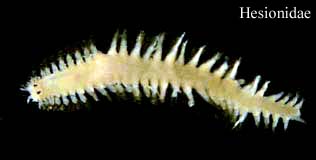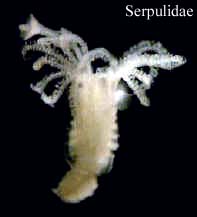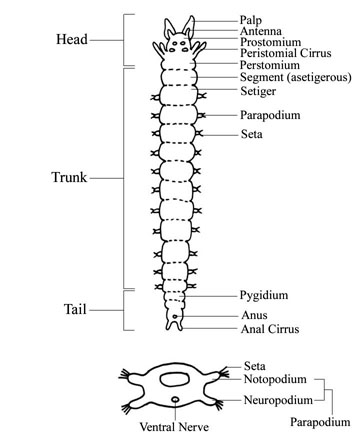 The Importance of Polychaetes The Importance of Polychaetes1. The dominant benthic fauna in
marine environment
Polychaetes
are the most abundant and diverse group in all marine sediments from intertidal to
deep-sea. Around 10 000 species have been described worldwide (Yang and Sun
1986). They show great variations in morphology, feeding and reproductive modes
that make them adapt to different marine condition especially in the sand and mud.
They are vital to the structure, production, dynamics, and health of the marine
benthos and environment. They aid the deposition, breakdown, incorporation and
turnover of the organic matters in the seabed that help to recycle nutrients to the
overlying water column.
2. As food resource
Most polychaetes are small and
short-lived with a high secondary production. They are an important link in
marine food webs. Due to the high calorific value and rich protein content,
both the adult and larvae of polychaetes are the main food supply of many economically
important fishes (Yang and Sun 1986). They can be harvested artificially or
directly. In China, a large amount of Nereidae are exported to Japan as bait
for recreational fishing. They are also a delicacy in South China and
Southeast Asia.
3. As an indicator of toxic
materials and pollution
Polychaetes are very useful
organisms that can be used as indicator for monitoring the marine environment.
They are sensitive to changes in environmental conditions. For example,
the dominance of tolerant species, such as Capitella capitata (Capitellidae) in
Victoria Habour and Minuspio
cirrifera (Spionidae) in Tolo Habour, Tolo Channel and
Mirs Bay, are indicators of organic pollution (Shin 1990). Other species such
as Diopatra chiliensis (Onuphidae), Marphysa sanguinea (Eunicidae) and Perinereis
aibuhitensis (Nereididae)
can be used as indicators of seawater temperature (Yang and Sun 1986).
4. Production of pesticide
Nereistoxin extracted from Lumbrineris
heteropodais (Lumbrineridae)
is used to produce a pecticide (Yang and Sun 1986). It is useful to kill pests but
safe to humans and domestic animals because it can be decomposed and excreted.
5. As harmful organisms
Some polychaetes are fouling organisms that
damage to ships' hulls, piers, water pipes and any artificial surfaces submerged in
seawater, causing increased maintenance costs and the risk of mechanical failure.
These polychaetes include Serpulidae, Syllidae, Spirorbidae, Tellbellidae,
Sabellidae and Nereididae.
In China, the yield of economically important seashells is reduced by Serpulidae which usually attaches to rocks, coral, ships' hull,
piers and seashells.
The Nereididae, Tylorrhychus
heterochaetus and Perinereis nuntia, are pests that damage crops (Yang and
Sun 1986). They can live in low salinity and freshwater. They feed on crops
in the fields near the coast of South China. |


